BY ROBERT ABELE
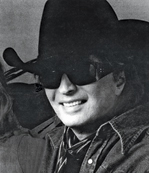 With the devastating impact of the Vietnam War fresh on America's mind, Michael Cimino's 1978 film The Deer Hunter sought to personalize the intensity of the experience. Neither a rah-rah heroism flick nor an overtly political slice of recent history, Cimino's grandly scaled but intimately rendered three-hour epic follows a close-knit band of Pennsylvania steelworkers who are drinking and hunting buddies, forever changed by the war. Over three acts, we see them celebrate a marriage, endure the life-or-death hell of the battlefield, and struggle to re-establish their irrevocably damaged bonds.
With the devastating impact of the Vietnam War fresh on America's mind, Michael Cimino's 1978 film The Deer Hunter sought to personalize the intensity of the experience. Neither a rah-rah heroism flick nor an overtly political slice of recent history, Cimino's grandly scaled but intimately rendered three-hour epic follows a close-knit band of Pennsylvania steelworkers who are drinking and hunting buddies, forever changed by the war. Over three acts, we see them celebrate a marriage, endure the life-or-death hell of the battlefield, and struggle to re-establish their irrevocably damaged bonds.
Central to Cimino's portrait of war's random violence are the tension-filled moments he created, none more so than two excruciating rounds of Russian roulette. The first of these occurs when Michael (Robert De Niro), Nick (Christopher Walken) and Stevie (John Savage) are being held by the Viet Cong, who force their prisoners to play for sport. Suddenly the romantically held notion among the deer hunting friends—the idea of a perfect "one-shot kill"—becomes a cruel, warped reality on a nightmarish human game board. "It's not a movie about Vietnam," says Cimino. "It's about the trauma inflicted on ordinary people by catastrophic events. It applies to any war."
Cimino, who won DGA and Academy Awards for his direction, explains how he shot one of the defining sequences in this landmark film on the Kwai River in Thailand, not far from the Burmese border. "We lived in a ramshackle old building. You had to cover yourself with netting and set off smoke bombs at night to sleep. It was bloody hard work."
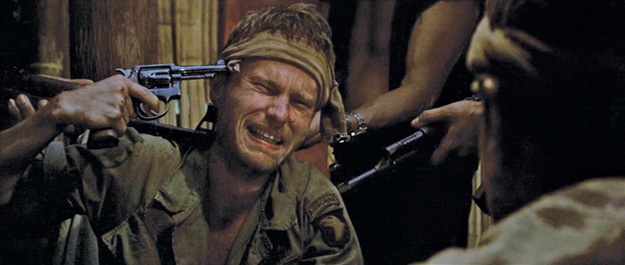
This is John Savage as Stevie, playing Russian roulette. It's a dramatic device, a way of demonstrating what I consider the real terror of war, which is waiting. The question is, how do you dramatize waiting? How do you demonstrate random death? This is the perfect metaphor. The Russian roulette was a shorthand way of showing what it means to wait. The shot of shots from all the Vietnam footage and photographs, the one that made the most impression on me, was the one in the street where the guy just pulls out his gun and blows that other guy's brains out and blood squirts out of his head. That was an iconic shot. This reminds me of that.
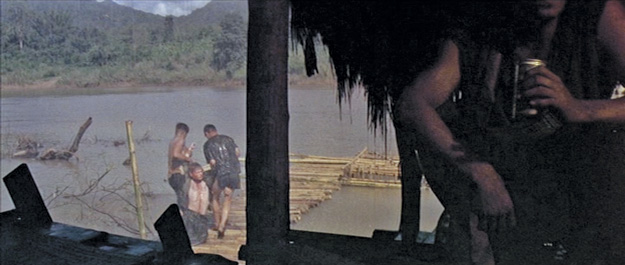
Here, John is being taken to a water cage for not shooting himself. Of the many rivers, the Kwai was the best because it had the right width, it was accessible from Bangkok, and it had the right bend in the river for the hut location. That was our way of dealing with the Kwai. It's a very swift river. It looks placid on top, but underneath it's icy cold and moves like hell. And it was also treacherous because it's full of snakes. We had doctors with cases of snake venom. We were in a pretty remote area, not too far, ironically, above the real site of the River Kwai Bridge that David Lean depicted. I let the location dictate the shots.
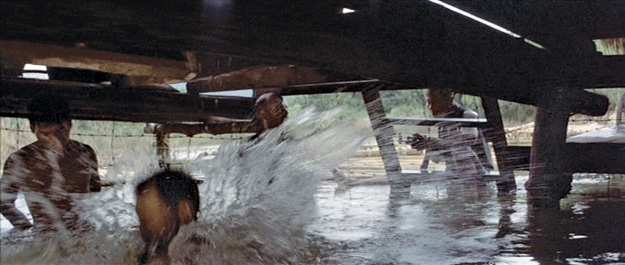
This was a typical Thai river hut: crude, light, with no heavy construction. The entire hut compound is on a floating underwater platform, so it rises and falls with the height of the river. It might be 10 feet higher the next day, or 10 feet lower, but you don't know because the pylons stayed the same height from the water level to the structure. But if you look super carefully in some shots, you can see the water marks on the reeds. So we pretty much have the camera right in the water. Fortunately, because we're on this moveable platform, we had a base to fix it to, so we didn't have to worry about the camera. That floating platform was our saving grace.
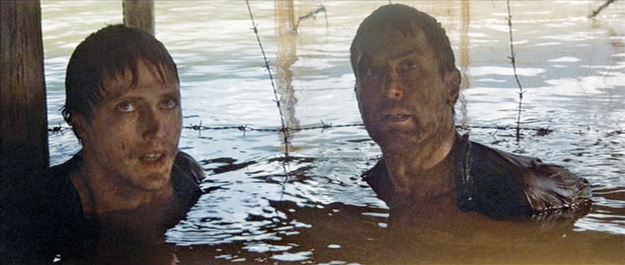
De Niro is explaining his escape plan to Chris [Walken]. To light something like this, where you're dealing with the surface of the water, you put big silks up so you don't get the hard light, and then you just soften the light so you don't get those blinding kicks. People make a virtue of sun flares and all that dopey stuff. It's so terrible. It takes the audience right out of the movie because it says, 'Hello, I'm the camera.' Sometimes we'd add a little bit of light to their faces, but it was basically natural light. I hate overlighting things. If this were done in the heyday of Hollywood, they'd have lit the hell out of it.
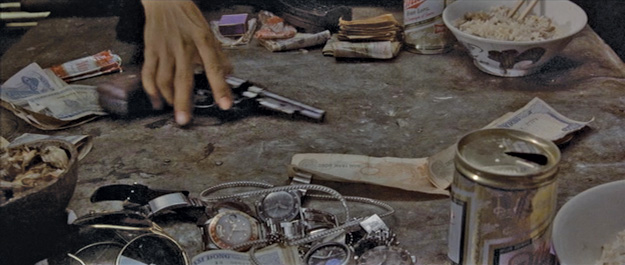
They're spinning the gun to see whether Michael or Nick will go first. These were just a lot of real objects we got from the area. David Lean used to say that every detail counts. You have to give as much detail to props as you do to your actors. One sour note can destroy the whole illusion of a movie. So if you're doing a movie where there are a lot of cars, the car is a character. When they go hunting in the mountains, it's a white Caddy. So for the table I had my greensman, Gus Basso, go out and get a lot of stuff from the villages. At the time, I had a reason for using that Miller can, but I don't remember what it was.
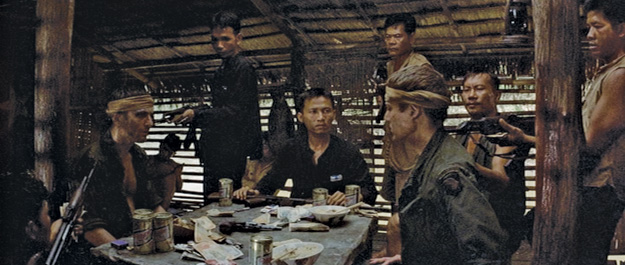
The basic purpose of a wide shot is to establish the geography. The geographical orientation is informational and it's something so forgotten in movies now. It's not just an establishing shot. It's a geography shot so then when you go in, people will know. There's no grand theoretical reason to use it other than to make it clear to the audience—even though it's a very small, constricted space—who's where. As for me, I'm never in a director's chair. Ever. I'm usually sitting on an apple box scrunched in the corner somewhere, on the floor, wherever. I'm small, so I can fit in a lot of places.
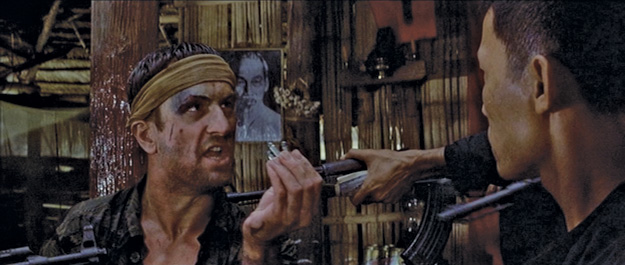
I did as much as I could to get them into kind of a combat-ready mode. I asked Bob, Chris and John to wear their clothes the whole time we were in Thailand, to sleep in them, and not to take a shower. Because it's just not possible to shit, shower and shave and then be made up to look like you've been in the bush. So the three of them stunk like hell. Just like when you're in combat and you don't get a chance to get your clothes pressed. I didn't want a wardrobe person cleaning them up just to have a prop man dirty them up.
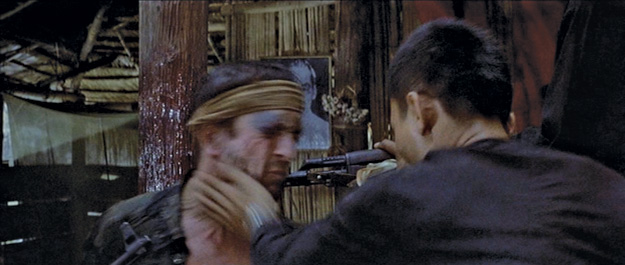
None of the Thai people we used to play the Viet Cong were actors, and they were reluctant at first to hit somebody. The head is sacred in Thailand, so every time they struck someone, we would have to cut so they could say a prayer of apology. But nothing's fake; I had them hit as hard as they could. And once they got into it, you could see the intensity in their faces. What you see here is a man crossing the line from a placid, happy Thai to a fighter in a cage match. Something took over. The next morning the only makeup we used on the leads was to cover up the redness from the day before.
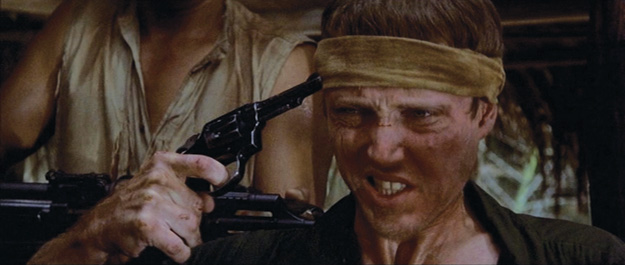
To direct actors well, you have to earn their trust. And the way you earn it is by making sure they know that your eye is really on them. Oftentimes, directing [actors] is just reminding them of the story. You can tell from the faces on the soldiers how intense they were. That's not acting; it's real. I'm generally trying to avoid flat light, and I'm going for sidelight, cross-light, backlight. The director determines that. The DP doesn't determine that, because when he shows up, [the set is] already built.
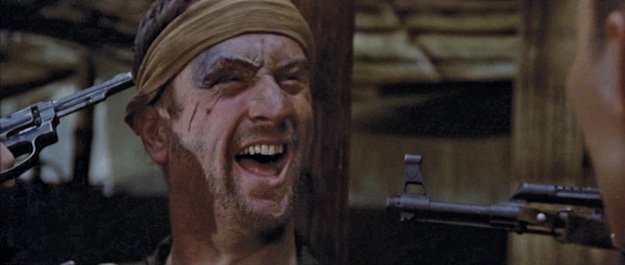
I've never understood why people say you can't be intimate with a 30 mm lens. I find the opposite to be true. I love to use a 30 on close-ups. It gives you a bit of space and gives you all the information that a conventional lens would not. Maybe it comes from my art training. The two biggest lenses are the 30 mm, which can do intense close-ups and vast vistas, and the 250 zoom, without using it to zoom. It's like golf; they say you can play the whole game with a five iron and a putter, which is basically true.
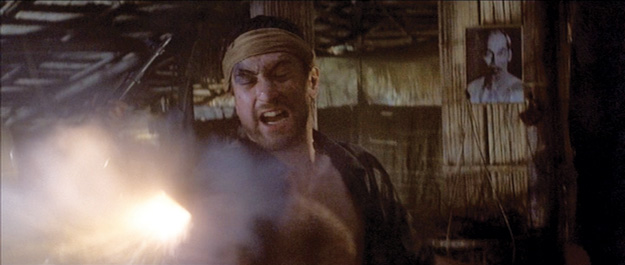
Firefights are fast, terrifying and blindingly chaotic. The Russian roulette part has a different kind of tempo. But when the actual killing starts, when Michael starts firing on their captors, you need a lot of specific little detail shots. That's the key to an action sequence. You want a lot of things to put together to create movement and violence and maximum impact. It's not enough to show a guy shooting guns and somebody being pulled with cables 15 feet in the air. For another scene set in their cabin when they're hunting, De Niro asked to use live ammo, but we didn't do that here because we were working with amateur actors.
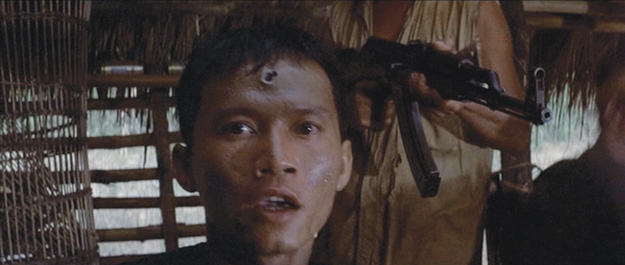
Each detail makes it real. The temptation is to stage it, shoot it and cover it with multiple cameras. But you have to get in there and show people who you've come to know individually being shot or blown up. Each one is a separate setup, so it takes a certain amount of discipline to stay with it. 'Okay, look, now we've got to do just this.' It feels silly, because you're just showing a guy's head, and then you're showing a trigger. You're showing this, you're showing that, but it's imperative to show that. There are no special effects. I've never used any of that.
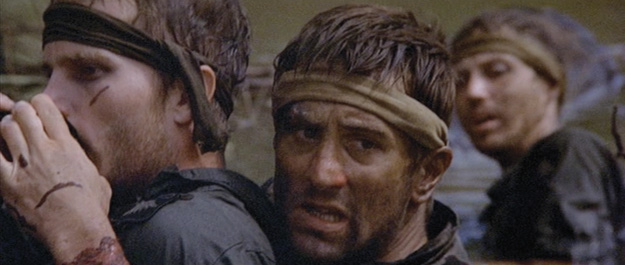
Michael wasn't going to leave Stevie, who was the weakest, behind. Now they're on a log floating down the river. We actually built a big square bamboo raft with oil drums, because the actual log is solid teak, which is heavy like iron. It doesn't float and we needed it above the water. It was the same concept as the hut. The plan was to float it down the river and be pulled by a steamboat with underground cables you couldn't see. Then we had two aluminum speedboats. I was in one, and the camera was in the other. We did it all from the speedboats: 'Zoom in! Zoom out! Go to the right! Chris, say your line again!' Mayhem.
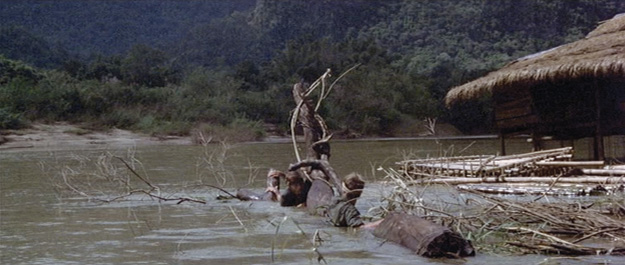
Before we could start shooting, the cables snapped. The log and the raft were now floating free, heading toward the South China Sea. So I told the actors to climb on the log. We're going around in circles in the speedboats, when all of a sudden the raft cracks, and the ends of the raft stick up in the air. So the stunt coordinator and I jumped into the river to pull down the ends. I'm screaming from the water, 'Do the scene again! Start the dialogue!' There's nothing I'd ever ask an actor to do that I wouldn't do. When they go down the river in the log, I'm in the water, fucking freezing.